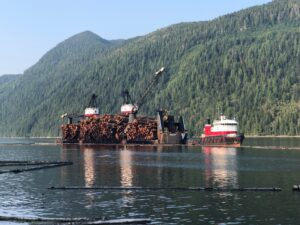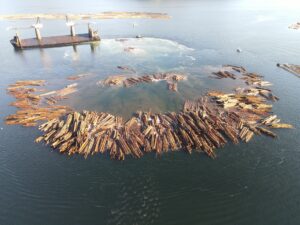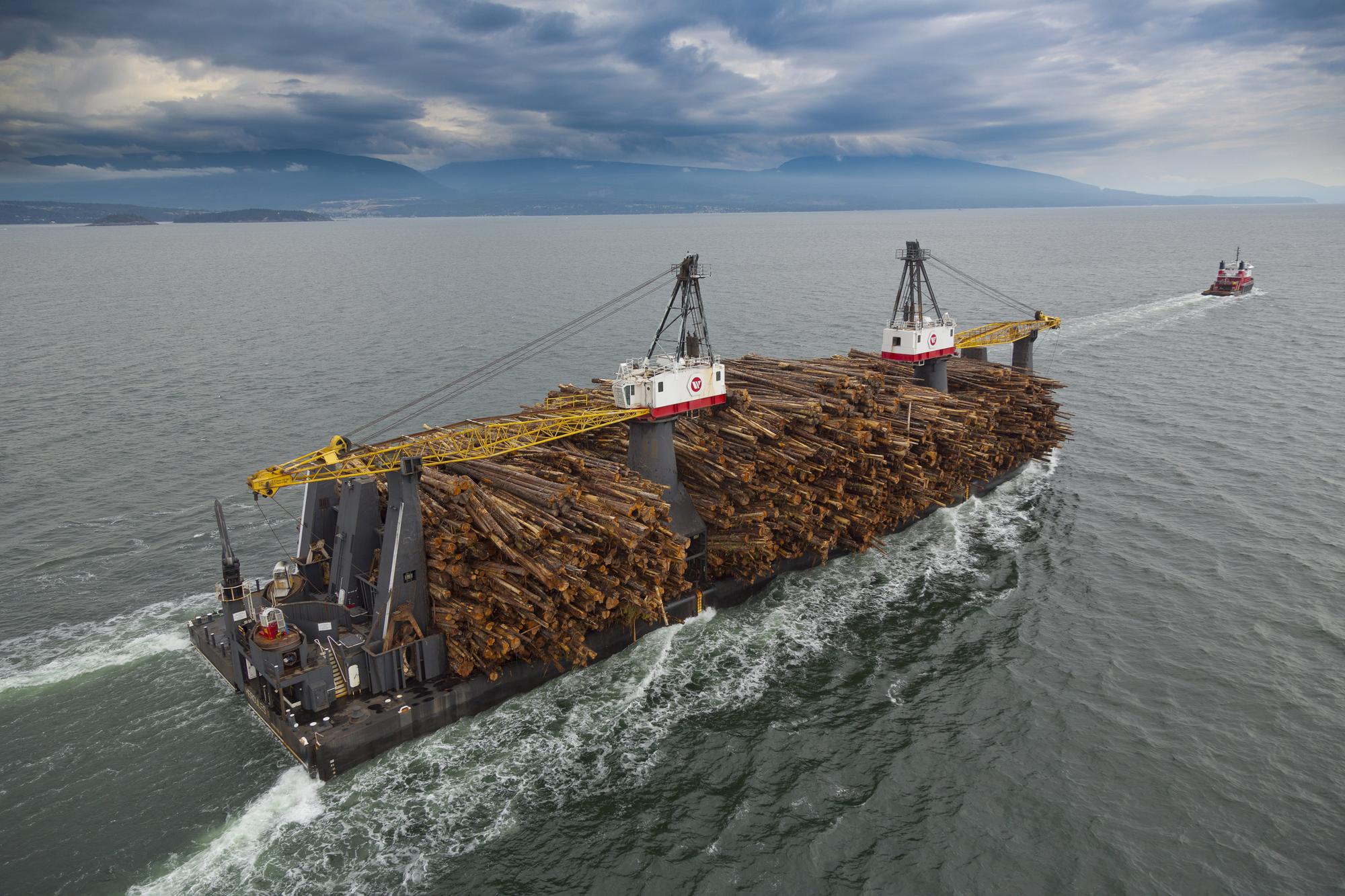May 12, 2023
Have you ever caught a log barge in action along BC’s coast? Or wondered how they operate? You’re not alone, and the process has even recently turned into a tourist attraction, with a local wildlife photographer’s video of a barge unloading going viral when it was shared on CHEK News.
What is it about this process that is so captivating? To satisfy the ongoing curiosity about log barging, we sat down with our in-house expert to break it down for us. Glen McGee is the manager of log barging at Seaspan.
“Vessels such as the Seaspan Royal and Seaspan Hercules play an important role in helping to deliver logs to customers across BC,” noted Glen. “It’s a true privilege to be a part of the marine and forestry industries.”
Since Seaspan’s beginning, our tugs and barges have moved raw materials and finished products for the forestry industry. From moving wood chips and raw logs to finished lumber or paper products, Seaspan’s fleet of specialized barges, like the Seaspan Royal and Seaspan Hercules, have helped keep the industry running efficiently.

Read on to find out what a typical run to deliver logs to customers in Ladysmith Harbour would look like for the Seaspan Royal and Hercules:
Our log barges often deliver logs from Quatsino Sound over to Ladysmith Harbour. While a common route for our experienced crew, the waters of Discovery Passage can be treacherous in certain conditions. It is the Master mariner’s job to choose an appropriate time during slack water to ensure that the crew and material can safely make their way up Johnstone Strait.
While on transit during this route, the crew often must navigate past opposing traffic, which included tugboats, other barges, and cruise ships near Campbell River just before entering the Seymour Narrows in Discovery Passage.
Once through the Narrows, the crew navigates the large barge through Johnstone Strait to reach Queen Charlotte Strait before turning to head for Cape Scott and the West Coast of Vancouver Island.
A day and a half after departing Vancouver, the tug and barge – and their crew, would finally reach the load site. Here they are met by log barge loaders, who, with the help of the tug crew, successfully load the logs onto the barge.

Sometimes dozer boats are in the vicinity to aid with the loading of the barge. Dozer boats are very small vessels which are used to marshal logs alongside a barge, which helps keep the log bundles tight and makes the job of picking up the bundles easier for the log loaders. Once complete, the vessel heads to Ladysmith, BC.
While on route, it is not uncommon for the crew to encounter rough weather off Cape Cook on the West Coast of Vancouver Island. After circumnavigating Vancouver Island, the logs arrive in Ladysmith for dumping.
When a log barge arrives at its destination, it is anchored down to hold it in place. Water is then pumped into its ballast and tipping tanks, which typically takes 90 minutes. Once the tanks are full, the barge releases from under the load, dumping the logs into the water, which are then then towed to shore to be sorted by species and grade for various sawmills.
There is no typical length of time for a full barge unloading process. Much like a car journey, the task depends on the destination, cargo, weather, and other factors. That said, the process is always performed safely and efficiently, thanks to the expertise and knowledge of our crews.
